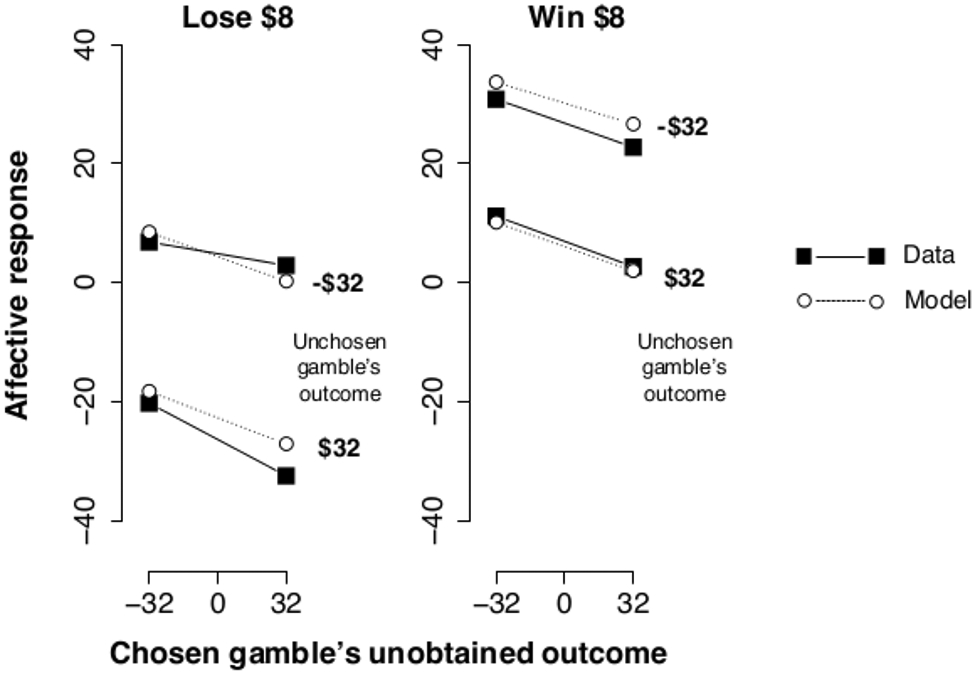Figure 2.

Left: affective responses to a loss of $8 under different combinations of unobtained outcomes for the chosen gamble (x-axis) and counterfactual outcomes for the unchosen gamble (separate lines). Right: affective responses to a win of $8. Empirical means of participants’ responses are represented by black squares and solid lines; affective responses as predicted by the Integrated Advantage model are represented by white circles and broken lines. There is a close correspondence between empirical data and model predictions (root-mean-square error = 2.93). In each plot, the vertical distance between the lines represents the magnitude of the counterfactual effect (i.e., the difference in reported affective response to the same outcome paired with a gain of $32 for the unchosen gamble versus a loss of $32 for the unchosen gamble). An expectation effect is also visible in the negative slope on all lines, indicating that the affective response to the same objective outcome is more negative when the outcome is lower than the expected value of the chosen gamble. Data reproduced from Figure 4 in Mellers et al. (1999).
